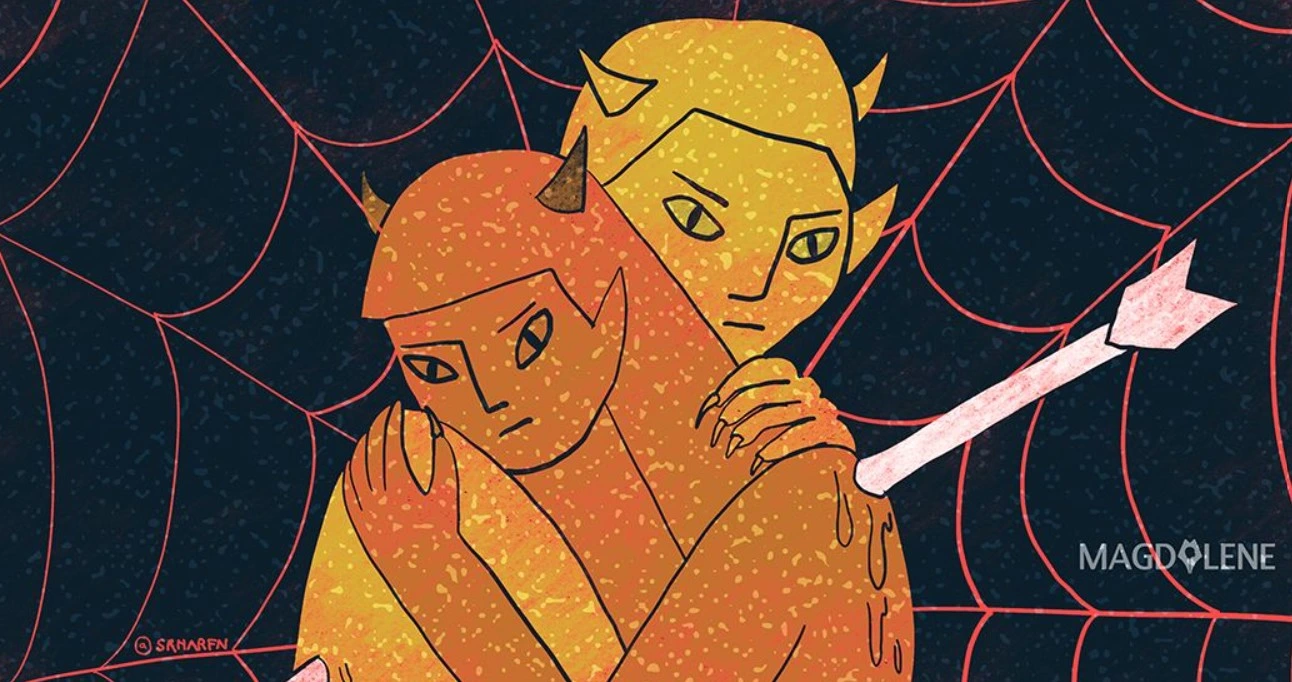Before Tina Fey, There was Mary Tyler Moore, A Pioneer in TV Feminism

Photo from Wikipedia
There was this mid-1990s song by Weezer, “Buddy Holly”, with a chorus that goes “Oo-ee-oo I look just like Buddy Holly. Oh-oh, and you’re Mary Tyler Moore.”
I know who Buddy Holly is: a rock pioneer who died in a plane crash at the age of 22. But who is Mary Tyler Moore?
In 2013, the year when a series of events led me to the path of feminism, I explored pop culture in the 1970s and watched The Mary Tyler Moore Show. Turned out that not only is it an ordinary sitcom, it is also a legend in the American television.
Like Buddy Holly, Mary Tyler Moore was born in 1936. Her fame came two years after Holly’s death, when she starred in The Dick Van Dyke Show. She became one of the first women on TV to constantly wear pants instead of skirt (while playing a housewife character), and won two Emmys and one Golden Globe for her portrayal of Laura Petrie.
The Mary Tyler Moore Show (MTMS) debuted in autumn 1970, produced by her company MTM Enterprises, and it defined the new decade. The opening credit shows 30-year-old Mary Richards driving to Minneapolis and enjoying the city life, with the theme song encouraging her with “You might just make it after all,” which was later changed to the more optimistic “You’re gonna make it after all” in subsequent seasons. In the pilot episode, she applies for a secretarial position at a local TV station, only to get the next available job: associate producer for the evening news.
There are two main sets in the show – the male-dominated WJM newsroom, and the women’s world of Mary’s apartment. Her landlady is the White Feminist Phyllis, and another tenant is the Jewish window dresser Rhoda. By mid-1970s, Mary’s studio apartment has become a dream bachelorette pad.
I began watching the show just for the laugh and the main actress, but it is easy to see why the show is seen as one of the finest comedies ever made. Its main premise is how a single woman can be happy in her 30s (Moore was 35 when the series started). She attempts to improve the rating of the worst station in Minneapolis, despite a vain and airheaded newsreader.
After hours, she hangs out with Rhoda (Valerie Harper) from upstairs, and had the show been made in the 21st century, there would have been several Rhoda x Mary fanfictions. I was prompted to write this piece after seeing Mary & Rhoda as one of those “Name a more iconic duo. I’ll wait” tweets.

The series showcases the inner working of media business, including rating and sponsorship, networks competition and union strike. As the series got more popular, it also touched on issues like equal pay for women, divorce (two main characters experience it) and pre-marital sex (still controversial in 1970s’ America).
The decline came in the mid-1970s, partly to its own success. Rhoda and Phyllis had their own spin-off shows, and replacing them were the cynical “Happy Homemaker” host Sue-Ann (Betty White) and ditzy Georgette (Georgia Engel). While the new main characters are also funny, I really missed the Mary & Rhoda relations.
Moore was nominated for the Lead Actress in Comedy in Emmy Awards year after year and won three times in 1973, 1974 and 1976, but her personal tolls leaked into the storyline (she was struggling with abusive marriage & alcoholism). One episode dealt with Mary Richards’ addiction to sleeping pills and she leaves the beloved pad for a forgettable city apartment.
American confidence crisis in the mid-1970s was something the show had to deal with. The opening scene in later seasons show Mary rolls her eyes at the price of meat, and an episode gloomily ends with the WJM crews seeing the sunset to comfort themselves. MTM Enterprises also dealt with a crisis after Rhoda got divorced in her series and death threats were sent to David Groh, who played her ex-husband.
In the second half of 1970s, Americans were tired of progressive politics, even as they voted for the Democrat Jimmy Carter, who was endorsed by Moore. Charlie’s Angels and Laverne and Shirley began to challenge the dominance of Mary Tyler Moore’s squad with their sexy disguises and slapsticks respectively. The series ended in spring 1977, and Moore never repeated her acting success on TV, despite the success of her production company in 1980s (e.g. Hill Street Blues & Remington Steele). I don’t think MTMS is ever shown in Indonesia.
The legacy of the show lived on to this decade. The show 30 Rock was obviously the MTM Show of 2000s – a single woman in her 30s and in TV business, who works with a gruff but a lovable boss. Both women deal with a vain and useless star. Betty White repeated her Sue-Ann villainy in Hot in Cleveland, and other casts are still guest starring in several TV shows & comedy movies.
Hot in Cleveland gave me a big surprise when it reunited the actresses of The Mary Tyler Moore Show, re-imagined as a 1960s’ bowling team (complete with a kiss between Moore and Harper and Engel’s deadpan reaction, “So that’s what all the tensions about.”). It is an excellent reunion episode and a fitting finale to my MTMS trip.
Sadly, the real Mary Tyler Moore is less than ideal. She has been an activist for animal rights and diabetes awareness, but since the late 2000s she has become more conservative and she distanced herself from Gloria Steinem, a fan of Mary Richards. I was relieved that Moore isn’t among the stars who openly endorse Donald Trump.
You can watch the whole series on YouTube (just search for Mary Tyler Moore) and experience the 1970s magic. It was great back then and it still can match up with modern comedies now. If Audrey Hepburn was the grandma to the movie stars, Mary Tyler Moore is the grandma to the TV stars.
Read Mario’s take on the “unseen” Japanese feminists.






















